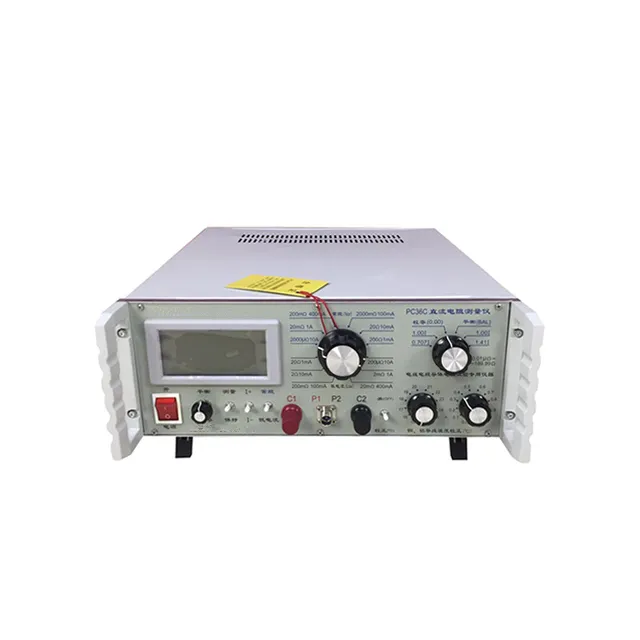Metal Tensile Testing Equipment for Accurate Strength Measurement and Material Analysis
Understanding Metal Tensile Testers A Key Tool in Material Science
In the realm of material science and engineering, the ability to accurately assess the mechanical properties of materials is crucial. One of the primary methods for evaluating these properties is through tensile testing, which is conducted using a device known as a metal tensile tester. This article delves into the significance of metal tensile testers, their working principles, key parameters measured, and their applications in various industries.
What is a Metal Tensile Tester?
A metal tensile tester is a specialized machine designed to evaluate the tensile strength, ductility, and other mechanical properties of metallic materials. During a tensile test, a sample of the material is subjected to controlled tension until it deforms and ultimately breaks. The results obtained from this test are vital for determining how a material will perform under various stress conditions in real-world applications.
Working Principle of Metal Tensile Testers
The operation of a metal tensile tester is relatively straightforward yet precise. The material sample, typically shaped as a standardized dog-bone configuration, is placed within the testing machine. The device grips the ends of the sample and begins to apply a uniaxial load, gradually increasing the tension until the sample reaches its breaking point. Throughout the test, both the applied load and the elongation of the sample are continuously recorded.
The data collected during the tensile test is then analyzed to provide a stress-strain curve. This curve is essential for understanding the material's mechanical behavior, allowing engineers to derive important parameters such as yield strength, ultimate tensile strength, and elongation at break.
Key Parameters Measured
1. Yield Strength This is the stress at which a material begins to deform plastically. Beyond this point, the material will not return to its original shape when the load is removed. 2. Ultimate Tensile Strength (UTS) The maximum stress a material can withstand while being stretched or pulled before breaking.
metal tensile tester

3. Elongation This measures how much a material can stretch before it fractures, expressed as a percentage of the original length.
4. Modulus of Elasticity Also known as Young’s modulus, this parameter reflects the stiffness of the material and is calculated from the slope of the initial linear portion of the stress-strain curve.
5. Reduction of Area This is the difference in cross-sectional area before and after fracture, providing insight into the material's ductility.
Applications in Various Industries
Metal tensile testers are indispensable tools across a variety of sectors. In the automotive industry, for instance, these testers help ensure that metals used in vehicle components can withstand the harsh conditions they encounter on the road. In aerospace, where safety is paramount, understanding the tensile properties of lightweight yet strong materials can be the difference between success and failure.
Moreover, in the construction industry, these testers play a vital role in verifying that steel and other metals meet regulatory standards for structural integrity. In research and development laboratories, they help drive innovations by enabling the testing of new alloys and composites, thereby accelerating the development of next-generation materials.
Conclusion
The metal tensile tester serves as a critical instrument in evaluating the mechanical properties of materials, ensuring they meet the demands of various applications. As industries continue to evolve and seek more advanced materials, the role of tensile testing will only become more important. Understanding the implications of tensile testing not only contributes to better product design but also enhances the overall safety and reliability of materials used in everyday applications. As technology advances, we can expect even more sophisticated testing methods that will continue to push the boundaries of material science.
-
Why the Conductor Resistance Constant Temperature Measurement Machine Redefines Precision
NewsJun.20,2025
-
Reliable Testing Starts Here: Why the High Insulation Resistance Measuring Instrument Is a Must-Have
NewsJun.20,2025
-
Flexible Cable Flexing Test Equipment: The Precision Standard for Cable Durability and Performance Testing
NewsJun.20,2025
-
Digital Measurement Projector: Precision Visualization for Modern Manufacturing
NewsJun.20,2025
-
Computer Control Electronic Tensile Tester: Precision and Power for the Modern Metal Industry
NewsJun.20,2025
-
Cable Spark Tester: Your Ultimate Insulation Assurance for Wire and Cable Testing
NewsJun.20,2025
 Copyright © 2025 Hebei Fangyuan Instrument & Equipment Co.,Ltd. All Rights Reserved. Sitemap | Privacy Policy
Copyright © 2025 Hebei Fangyuan Instrument & Equipment Co.,Ltd. All Rights Reserved. Sitemap | Privacy Policy
